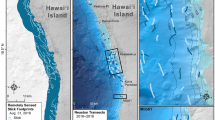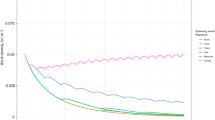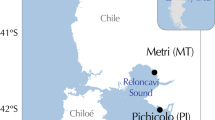Abstract
OYSTERS of the genus Ostrea incubate their larvæ In O. edulis, for example, veligers are released from the female when 0.15–0.17 mm long, and afterwards undergo pelagic development, usually of 6–14 days, according to water temperature and food supply, before settling and metamorphosing1–3. In O. chilensis Philippi from Chile, however, larvæ from incubating females collected by the Lund University Chile Expedition 1948–49 were examined by one of us (R. H. M.), through the courtesy of Dr. T. Soot-Ryen and Prof. H. Brattstrøm, and were found to be 0.45–0.49 mm long and to possess the eye spots and foot which other species develop only at the end of their pelagic life. The other (P. J. H.), who is publishing elsewhere a fuller account of the life-history of the New Zealand mud oyster, O. lutaria Hutton, has observed similar larvæ in that species. These larvæ, when released by the female in laboratory experiments, settled almost immediately. In both species this probably also happens in Nature.
This is a preview of subscription content, access via your institution
Access options
Subscribe to this journal
Receive 51 print issues and online access
$199.00 per year
only $3.90 per issue
Buy this article
- Purchase on SpringerLink
- Instant access to full article PDF
Prices may be subject to local taxes which are calculated during checkout
Similar content being viewed by others
References
Korringa, P., Arch. Néerl. Zool., 5, 1 (1941).
Cole, H. A., Fish Invest. Lond. (2), 16 (4), 1 (1939).
Waugh, G. D., Fish Invest. Lond. (2), 21 (1), 1 (1957).
Author information
Authors and Affiliations
Rights and permissions
About this article
Cite this article
MILLAR, R., HOLLIS, P. Abbreviated Pelagic Life of Chilean and New Zealand Oysters. Nature 197, 512–513 (1963). https://doi.org/10.1038/197512b0
Issue date:
DOI: https://doi.org/10.1038/197512b0
This article is cited by
-
Female–embryo relationships in Ostrea chilensis: brooding, embryo recognition, and larval hatching
Marine Biology (2019)
-
Latitudinal gradients in species richness for South American Mytilidae and Ostreidae: can alternative hypotheses be evaluated by a correlative approach?
Marine Biology (2009)
-
Prodissoconch morphology is environmentally modified in the brooding bivalve Lasaea subviridis
Marine Biology (1986)



